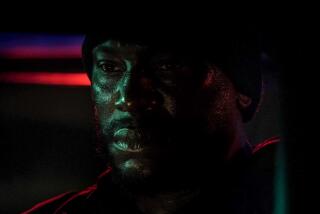A Second Look: Putting a fresh spin on ‘The War Room’
- Share via
Nearly two decades ago, D.A. Pennebaker and Chris Hegedus’ documentary “The War Room” turned the strategists behind Bill Clinton’s 1992 presidential campaign into bona-fide media stars. The film’s arrival on DVD and Blu-ray from the Criterion Collection in another election year is a reminder of both how much and how little things have changed.
The popular image of the darkly glamorous arts of political spin owes much to these veterans of the Clinton war room (George Clooney screened the film for his “Ides of March” cast). But “The War Room” is also in many ways the product of an earlier information age, and for better or worse, a political campaign could almost certainly not be captured this way today.
A pioneer of the American cinema-vérité movement, Pennebaker always has been drawn to elections as natural arenas for drama. He was one of the young filmmakers enlisted to help Robert Drew on the landmark 1960 documentary “Primary.” Taking advantage of lightweight, sync-sound cameras, the film chronicles a tight Wisconsin race between Sens. John F. Kennedy and Hubert Humphrey and is often called the first vérité film.
Pennebaker attempted his own film on Robert F. Kennedy in the ‘60s, which never got off the ground. In 1992, his plan with Hegedus was to document the man they expected to win the election. When they couldn’t get Clinton — he does appear in a few scenes, most memorably in a Razorback T-shirt and shorts — they turned their attention to James Carville, the campaign’s chief strategist, and his mostly young staffers, hailed by Clinton in his triumphant election-night speech as “brilliant, aggressive, unconventional.”
Communications director George Stephanopoulos makes for a bright-eyed sidekick, but the Ragin’ Cajun is the undisputed star. Carville gets off more than his share of sharp-tongued barbs, describing “the stench of yesterday” clinging to then-President George H.W. Bush and calling Ross Perot’s candidacy “the single most expensive act of masturbation in the history of the world.”
Thanks to his unlikely relationship with Republican strategist Mary Matalin, Carville is also the source of romantic intrigue, and he provides the film’s emotional peak: a choked-up election-eve speech to campaign staffers.
The best vérité documentarians are usually the ones with the keenest sense of drama: Their work depends on keeping one eye trained on in-the-moment detail and another on the ever-shifting big picture. Crafted with the long term in mind, “The War Room” keeps the emphasis on character.
It touches on but never overexplicates the various subplots of the ’92 campaign — accusations of draft-dodging, the Gennifer Flowers scandal, Perot’s on-off campaign — and maintains a strong forward motion, even a hint of suspense, despite the foregone conclusion.
Largely confined to the so-called war room in Little Rock that was the campaign’s nerve center, Hegedus and Pennebaker find compelling material in the day-to-day work of pollster number-crunching, signage design, the massaging of an ad script. One mini-drama tellingly plays out in full — a discovery about Bush-Quayle posters being printed in Brazil goes from potential game changer to nonissue — reflecting the environment’s hothouse volatility.
Present-day viewers cannot fail to note that “The War Room,” shot on 16mm film, exists in a largely analog world. There are relatively few computers in sight, most phone conversations take place on land lines, and even though the film predicts the rapid-response mode of American politics today, the speed of the 1992 news cycle seems almost leisurely.
The Criterion release includes Pennebaker and Hegedus’ 2008 follow-up, “The Return of the War Room,” in which most of the key participants relive earlier glories and reflect on the distance between here and now. A conventional clips and talking-heads assemblage, it only points up the effectiveness of the original’s vérité style.
Arguably, “The War Room” endures less as a historical document than as something more timeless. It’s a film about the excitement and the labor of politics as it is practiced, its role in the lives of people who see it as a calling, an art, a game and an obsession.
More to Read
The biggest entertainment stories
Get our big stories about Hollywood, film, television, music, arts, culture and more right in your inbox as soon as they publish.
You may occasionally receive promotional content from the Los Angeles Times.










